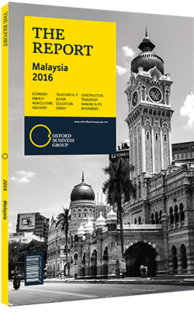Foo Su Yin, CEO, RAM Ratings: Interview

Interview: Foo Su Yin
What was the argument behind the reaffirmation of Malaysia’s global and ASEAN-scale sovereign ratings at “gA2” and “seaAAA”?
FOO SU YIN: Malaysia’s sovereign ratings reflect its economic resilience, which is underscored by a diversified industrial structure and export composition as well as a robust banking system. This is evident in its growth of 5% in 2015, which is commendable given the high base effect in 2014, prevailing external volatilities and ongoing domestic structural adjustments. While weak global conditions are anticipated to persist, we expect Malaysia to record a robust growth rate of 4.4% in 2016.
Malaysia’s government finances remain a key rating constraint, as the fiscal deficit target under the recently recalibrated budget (3.1% of GDP) is wider than in most emerging markets. The recalibration of the budget is largely due to the fact that 14% of total fiscal revenues are derived from fossil-fuel sources. These are expected to decline substantially amid lower global commodity prices. However, recent structural adjustments, such as the implementation of the Goods and Services tax and the removal of retail fuel subsidies, as well as revisions of the prices of various administered goods and services, are steps in the right direction towards fiscal sustainability.
What are the main risks to Malaysia’s sovereign rating and economic outlook for 2016?
YIN: The main risk for Malaysia’s sovereign rating is the government’s substantial debt burden in 2015, which stands at 54.5% of GDP – quite a high figure when compared to its rating peers. However, the silver lining here is that the maturity profile of this debt is quite favourable, with less than 10% slated to mature in 2016 and with only 3% foreign-denominated. Consequently, fluctuations in the exchange rate are not too worrying in this context. Elsewhere, a chief concern to our economic outlook would be the impact of lower commodity prices on the country’s external position. One of the most obvious impacts on the macro level is the narrowing of our current account surplus. This surplus has always been a big plus point for Malaysia. Even when the reserves position was declining during 2015, the current account surplus bolstered some of that resilience. So its narrowing is something that can be taken as a cause for concern.
The export market is still not as robust as we would have hoped. This recovery, which has been going on for a long time, has yet to really show reassuring positive momentum. Together with the commodity-price squeeze, it is putting some strain on the current account. We expect that our current-account surplus for 2016 will be 1% of GDP, down from 2.9% of GDP in 2015.
How would you interpret the impact of the US Federal Reserve interest rate rise?
YIN: While expectations of continuing US Federal Reserve rate rises remain prevalent, we currently expect the impact on Malaysia’s sovereign ratings to be limited. Interest rate increases in the US will boost capital outflow from emerging markets, which would include Malaysia. However, the direct impact on the sovereign, with regard to its sources of financing, is minimal thanks to its deep and long-established capital markets. Notably, Malaysia’s debt capital market is one of the region’s largest, and the sovereign is not reliant on external debt for its financing needs.
The economic impact from a rate hike is mixed, given that the resultant weaker exchange rate will not only increase export revenues but will also raise import costs. Similar to the sovereign, Malaysian banks and companies are not reliant on external sources of financing for their operating needs.
You have reached the limit of premium articles you can view for free.
Choose from the options below to purchase print or digital editions of our Reports. You can also purchase a website subscription giving you unlimited access to all of our Reports online for 12 months.
If you have already purchased this Report or have a website subscription, please login to continue.

